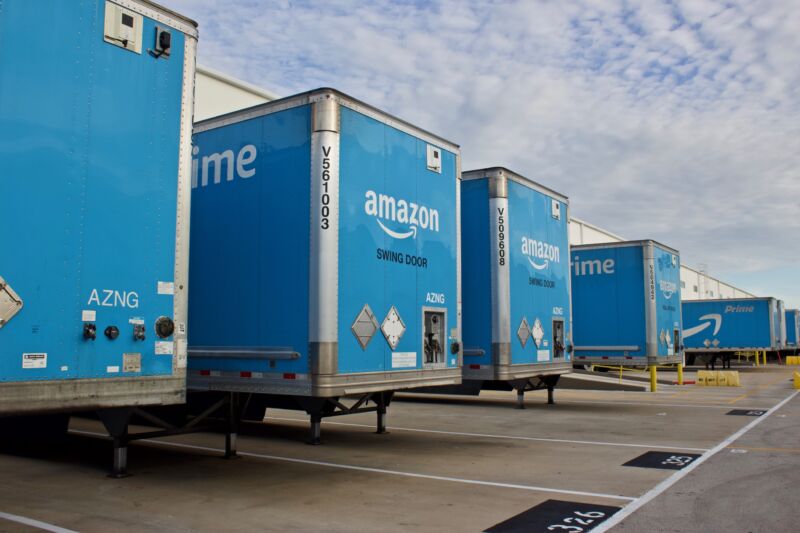
reader comments
41 with 38 posters participating
Amazon “seized and destroyed” over 2 million counterfeit products that sellers sent to Amazon warehouses in 2020 and “blocked more than 10 billion suspected bad listings before they were published in our store,” the company said in its first “Brand Protection Report.”
In 2020, “we seized and destroyed more than 2 million products sent to our fulfillment centers and that we detected as counterfeit before being sent to a customer,” Amazon’s report said. “In cases where counterfeit products are in our fulfillment centers, we separate the inventory and destroy those products so they are not resold elsewhere in the supply chain,” the report also said.
Third-party sellers can also ship products directly to consumers instead of using Amazon’s shipping system. The 2 million fakes found in Amazon fulfillment centers would only account for counterfeit products from sellers using the “Fulfilled by Amazon” service.
The counterfeit problem got worse over the past year. “Throughout the pandemic, we’ve seen increased attempts by bad actors to commit fraud and offer counterfeit products,” Amazon VP Dharmesh Mehta wrote in a blog post yesterday.
Counterfeiting is a longstanding problem on Amazon. Other problems on Amazon that harm consumers include the sale of dangerous products, fake reviews, defective third-party goods, and the passing of bribes from unscrupulous sellers to unscrupulous Amazon employees and contractors. One US appeals court ruled in 2019 that Amazon can be held responsible for defective third-party goods, but Amazon has won other similar cases. Amazon is again arguing that it should not be held liable for a defective third-party product in a case before the Texas Supreme Court that involves a severely injured toddler.
Amazon tries to reassure legit sellers
Amazon’s new report was meant to reassure legitimate sellers that their products won’t be counterfeited. While counterfeits remain a problem for unsuspecting Amazon customers, the e-commerce giant said that “fewer than 0.01 percent of all products sold on Amazon received a counterfeit complaint from customers” in 2020. Of course, people may buy and use counterfeit products without ever realizing they are fake or without reporting it to Amazon, so that percentage may not capture the extent of the problem.
wrote about a few months ago involves “bait-and-switch reviews” in which sellers trick Amazon into displaying reviews for unrelated products to get to the top of Amazon’s search results. In one case, a $23 drone with 6,400 reviews achieved a five-star average rating only because it had thousands of reviews for honey. At some point, the product listing had changed from a food item to a tech product, but the reviews for the food product remained. After a purging of the old reviews, that same product page now lists just 348 ratings at a 3.6-star average.
Amazon is trying to prevent recurrences of this problem, saying in its new report that it scans “more than 5 billion attempted changes to product detail pages daily for signs of potential abuse.”
Amazon also provides self-service tools to companies to help them block counterfeits of their products. Amazon’s report said that 18,000 brands have enrolled in “Project Zero,” which “provides brands with unprecedented power by giving them the ability to directly remove listings from our store.” The program also has an optional product serialization feature that lets sellers put unique codes on their products or packaging.
The self-service tool only accounts for a tiny percentage of blocked listings. “For every 1 listing removed by a brand through our self-service counterfeit removal tool, our automated protections removed more than 600 listings through scaled technology and machine learning that proactively addresses potential counterfeits and stops those listings from appearing in our store,” Amazon said.






